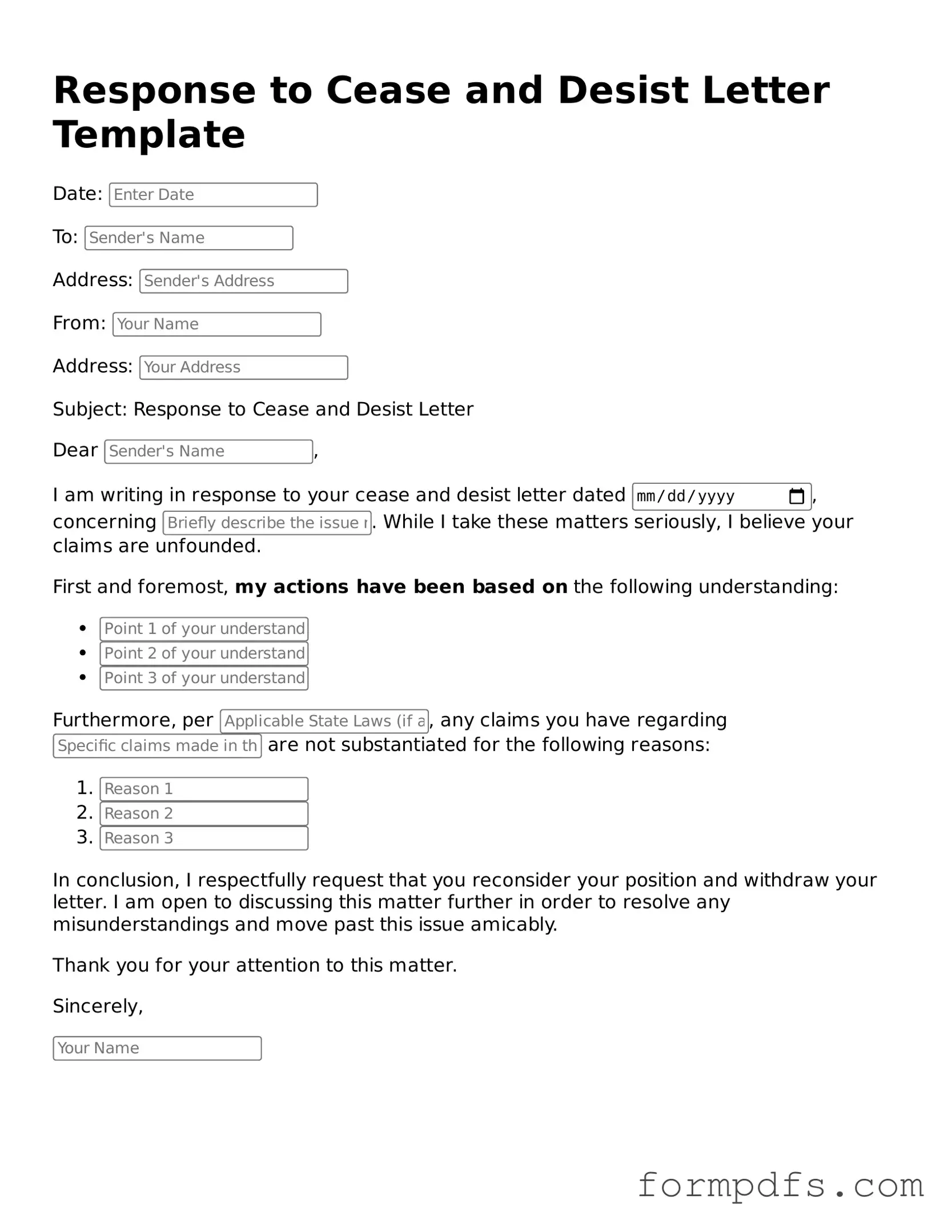What is a cease and desist letter?
A cease and desist letter is a formal request from one party to another, demanding that they stop a specific action that is believed to infringe upon rights or cause harm. This letter typically outlines the behavior that is objectionable and may threaten legal action if the recipient does not comply. It serves as a warning and is often the first step before pursuing more formal legal remedies.
Why would I receive a cease and desist letter?
You might receive a cease and desist letter for various reasons, such as alleged copyright infringement, trademark violations, or other unlawful activities. The sender believes that your actions are negatively impacting their rights or interests. Receiving such a letter can be alarming, but it is important to understand the specific claims being made against you.
What should I do upon receiving a cease and desist letter?
Upon receiving a cease and desist letter, it is crucial to read it carefully and assess the claims being made. Consider consulting with a legal professional to understand your rights and options. Do not ignore the letter; failing to respond could lead to further legal action. Depending on the situation, you may choose to comply, negotiate, or contest the claims made against you.
Can I ignore a cease and desist letter?
Ignoring a cease and desist letter is generally not advisable. Doing so could lead to escalation, including potential lawsuits or other legal actions. A proactive approach is often beneficial. Responding appropriately can help clarify your position and may lead to a resolution without further conflict.
What is included in a response to a cease and desist letter?
A response to a cease and desist letter should clearly address the claims made. It may include an acknowledgment of the letter, a statement of your position regarding the allegations, and any evidence or arguments that support your case. If you believe the claims are unfounded, you may assert your rights and request that the sender withdraw their demands.
How can I draft an effective response?
To draft an effective response, begin by carefully reviewing the cease and desist letter. Clearly articulate your position and provide any relevant facts or evidence that support your case. Maintain a professional tone, even if you disagree with the claims. It may also be beneficial to seek legal advice to ensure that your response is comprehensive and appropriately addresses the issues raised.
What happens if I comply with the cease and desist letter?
If you choose to comply with the cease and desist letter, you will typically cease the activity in question as requested. This may resolve the issue amicably. However, it is essential to consider whether the claims made against you are valid. Complying without understanding the implications could limit your rights in the future.
Can I negotiate the terms of a cease and desist letter?
Yes, negotiation is often possible. If you believe that the demands in the cease and desist letter are overly broad or unreasonable, you can propose alternative terms. Open communication can lead to a mutually agreeable solution. Engaging in negotiation may also demonstrate your willingness to resolve the matter without resorting to litigation.
